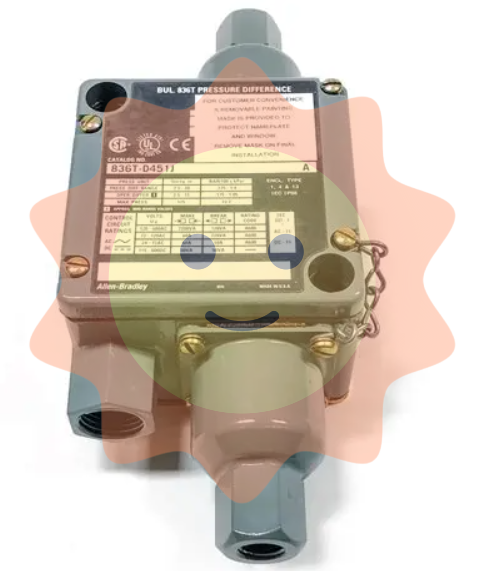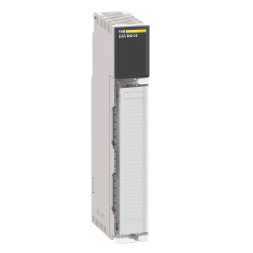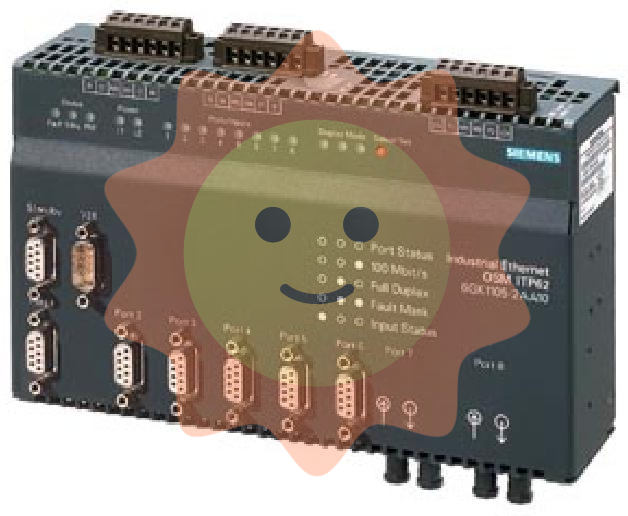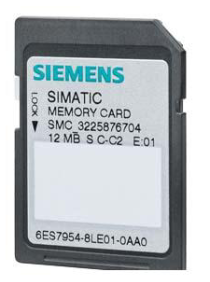In the ABB automation control system architecture, the PPD113B03-26-100110 distribution module plays the role of the "power center", connecting the system's main power supply with various load devices (such as PLC modules, I/O modules, sensors, controllers, etc.). The power supply environment in industrial sites is complex, with various risks such as voltage fluctuations, surges, and overloads. This module integrates power distribution, overload protection, short circuit protection, and other functions to accurately distribute stable power to each load unit. At the same time, it quickly cuts off the fault circuit when the power supply is abnormal, avoiding the spread of faults and affecting the operation of the entire system.
ABB PPD113B03-26-100110 3BHE023584R2634 Power Distribution Module
Module core positioning
In the ABB automation control system architecture, the PPD113B03-26-100110 distribution module plays the role of the "power center", connecting the system's main power supply with various load devices (such as PLC modules, I/O modules, sensors, controllers, etc.). The power supply environment in industrial sites is complex, with various risks such as voltage fluctuations, surges, and overloads. This module integrates power distribution, overload protection, short circuit protection, and other functions to accurately distribute stable power to each load unit. At the same time, it quickly cuts off the fault circuit when the power supply is abnormal, avoiding the spread of faults and affecting the operation of the entire system.
Core functional characteristics
1. Accurate multi-channel power distribution capability
The module adopts a multi-channel output design, which can distribute single or multiple input power supplies into multiple independent output circuits. Each circuit supports independent control and monitoring, adapting to the power supply needs of different load devices. The current specifications of the output circuit have been optimized and designed to match the power consumption characteristics of common modules in ABB automation systems, while supporting flexible load configuration. The types and quantities of devices connected can be adjusted according to actual working conditions to meet diverse power distribution scenarios.
2. Comprehensive fault protection mechanism
In response to various risks in industrial power supply, the module integrates multiple protection functions to build a comprehensive safety barrier for load equipment. When an overload occurs in a certain output circuit, the built-in overload protection component of the module will quickly act to cut off the power supply of the circuit. After the fault is eliminated, the power supply can be restored manually or automatically; If a short circuit fault occurs, the short circuit protection mechanism will respond within milliseconds to prevent high current from causing damage to the power supply and load equipment. In addition, the module also has surge suppression function, which can resist instantaneous overvoltage caused by grid fluctuations and protect sensitive electronic components.
3. Real time status monitoring and diagnosis
The module is equipped with a comprehensive status monitoring and indication system, which can display the real-time input power status, on/off status of each output circuit, and fault information (such as overload, short circuit, etc.) through the LED indicator lights on the panel. On site maintenance personnel can quickly determine the operation status of the module without the need for professional tools. At the same time, some models support uploading operational status data to the upper computer system through communication interfaces to achieve remote monitoring and fault warning, providing data support for preventive maintenance of the system.
4. High reliability and environmental adaptability
The module adopts industrial grade components and reinforced structure design, with excellent anti-interference performance and environmental adaptability. The internal circuit adopts technologies such as optoelectronic isolation to effectively resist electromagnetic interference in industrial sites and ensure stable transmission of power supply signals; The shell and internal structure have been optimized for temperature and humidity resistance, and can operate stably in harsh industrial environments for a long time, adapting to complex working conditions such as high temperature, high humidity, and high dust. The mean time between failures (MTBF) has reached a high industrial standard.
5. Convenient installation and expansion
The module adopts a 35mm standard DIN rail installation method, which has good compatibility with other modules of ABB automation system and can be quickly integrated into existing control cabinets. The installation process is simple and efficient. The wiring terminals of the module are designed to prevent accidental insertion, clearly distinguishing between input and output circuits to reduce the risk of wiring errors; Simultaneously supporting parallel expansion of multiple modules, the power supply capacity can be flexibly expanded according to the increase of system load, improving the scalability of the system.
Key technical parameters
input parameters
Input voltage: DC 24V (wide range 18-32V DC); Input current: Maximum 50A; Input interface: Phoenix terminal (supports large wire diameter)
output parameters
Number of output circuits: 12 independent outputs; Single output current: maximum 10A; output voltage: consistent with input voltage (error ± 1%); Output mode: Each channel has independent fuse protection
Protection features
Overload protection: Single channel overload threshold can be configured (5-10A), action time ≤ 500ms; Short circuit protection: instantaneous action when single channel short-circuit current ≥ 20A; Surge protection: compliant with IEC 61000-4-5 standard, maximum surge current 10kA
Monitoring and indication
Status indicator: 1 power main indicator light, 12 circuit status indicator lights (normally green, fault red); Diagnostic function: supports overload and short circuit fault location
working environment
Working temperature: -25 ℃~70 ℃; Storage temperature: -40 ℃~85 ℃; Relative humidity: 5%~95% (no condensation); Protection level: IP20 (panel)
mechanical properties
Installation method: 35mm DIN rail installation; Dimensions (length x width x height): 140mm x 100mm x 75mm; Weight: Approximately 0.8kg
certification standard
Compliant with industrial safety standards such as IEC 61010-1 and UL 508
Typical Applicable Scenarios
1. Automation system in the power industry
In the automation control systems of thermal power plants, hydropower stations, and substations, this module can serve as the core distribution unit, providing stable power supply for key equipment such as PLC control systems, DCS distributed control systems, and relay protection devices. Its high reliability and strong anti-interference ability can adapt to the frequent fluctuations of the power grid in the power system, ensuring the continuous operation of core functions such as relay protection and data acquisition, and guaranteeing the safety and stability of the power system.
2. Chemical and process industries
In the production control systems of process industries such as chemical and petrochemical, PPD113B03-26-100110 module can be used to allocate power to equipment such as reactor temperature control module, flow detection sensor, valve actuator, etc. The chemical production environment is complex and requires certain explosion-proof and corrosion-resistant equipment. The industrial grade design of this module can adapt to such scenarios, and its fault protection function can avoid production interruptions or safety accidents caused by power supply problems.
3. Metallurgy and Steel Industry
There are harsh conditions such as high temperature, high dust, and strong electromagnetic interference in the metallurgical production process. This module can be integrated into the control cabinet of the metallurgical automation control system to provide stable power supply for the blast furnace control system, continuous casting and rolling equipment control module, detection instruments, etc. Its anti-interference design and wide temperature working characteristics can effectively resist complex interference in metallurgical sites, ensuring accurate execution of data transmission and control instructions during the production process.
4. Rail Transit Control System
In the signal control system and train dispatch system of rail transit such as subway and light rail, this module can serve as a power distribution unit, providing reliable power supply for signal acquisition modules, communication equipment, dispatch terminals, etc. Rail transit has extremely high requirements for system reliability. The multiple protection functions and long-life design of modules can meet the demand for 24-hour continuous operation, ensuring the safe operation of rail transit.
Key points for installation and use
1. Installation specifications
Before installation, it is necessary to confirm that the input voltage of the module matches the on-site power supply to avoid module damage caused by overvoltage connection; The module should be installed in a well ventilated location away from heat sources (such as high-power resistors and heaters) and strong electromagnetic radiation sources (such as frequency converters) to ensure that the operating temperature is within the specified range; When installing with DIN rails, it is necessary to ensure that the modules are firmly fixed and maintain a minimum distance of 5mm from adjacent modules for easy heat dissipation and maintenance; When wiring, it is necessary to strictly distinguish between input and output terminals, connect the wires according to the terminal identification, ensure that the wiring is firm, and avoid poor contact causing heating or faults.
2. Debugging and configuration
1. Power test: After connecting the input power supply, observe whether the module power indicator light is on normally, use a multimeter to measure whether the input voltage is within the specified range, and confirm that the power supply is stable.
2. Circuit configuration: Based on the power consumption characteristics of each output circuit load, configure corresponding overload protection thresholds to ensure that the protection function matches the load (such as configuring a 6A overload threshold for modules with 5A power consumption).
3. Load testing: After connecting each load device, check the status of the corresponding output circuit indicator lights one by one to confirm that the circuit power supply is normal; Simulate overload scenarios (such as connecting loads that exceed the threshold), check if the module can cut off the circuit in a timely manner, and verify the effectiveness of the protection function.
4. Communication testing: If the module supports remote monitoring, communication parameters (such as address and baud rate) need to be configured to establish communication with the upper computer system and confirm that the status data can be uploaded normally.
3. Daily maintenance and precautions
Regularly (recommended monthly) check the status of module panel indicator lights to confirm that each circuit is operating normally; Check the wiring terminals for looseness every quarter, especially for high current circuits, to avoid terminal heating caused by poor contact; Regularly clean the dust on the surface of the module and the heat dissipation holes to ensure good heat dissipation; When a fault occurs in a certain circuit, the input power should be cut off first, and then the fault should be investigated. When replacing the fuse element, the same accessories as the original specifications should be selected; When a module malfunctions, professional personnel should be contacted for repair to avoid secondary damage caused by self disassembly.

- User name Member Level Quantity Specification Purchase Date
- Satisfaction :
-









Email:wang@kongjiangauto.com




































































































































